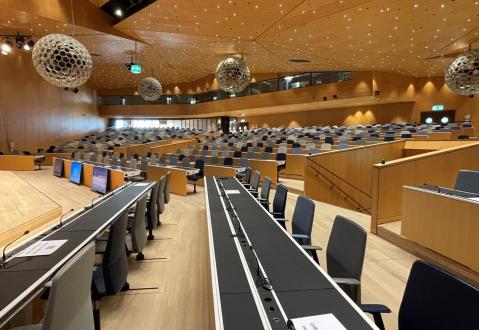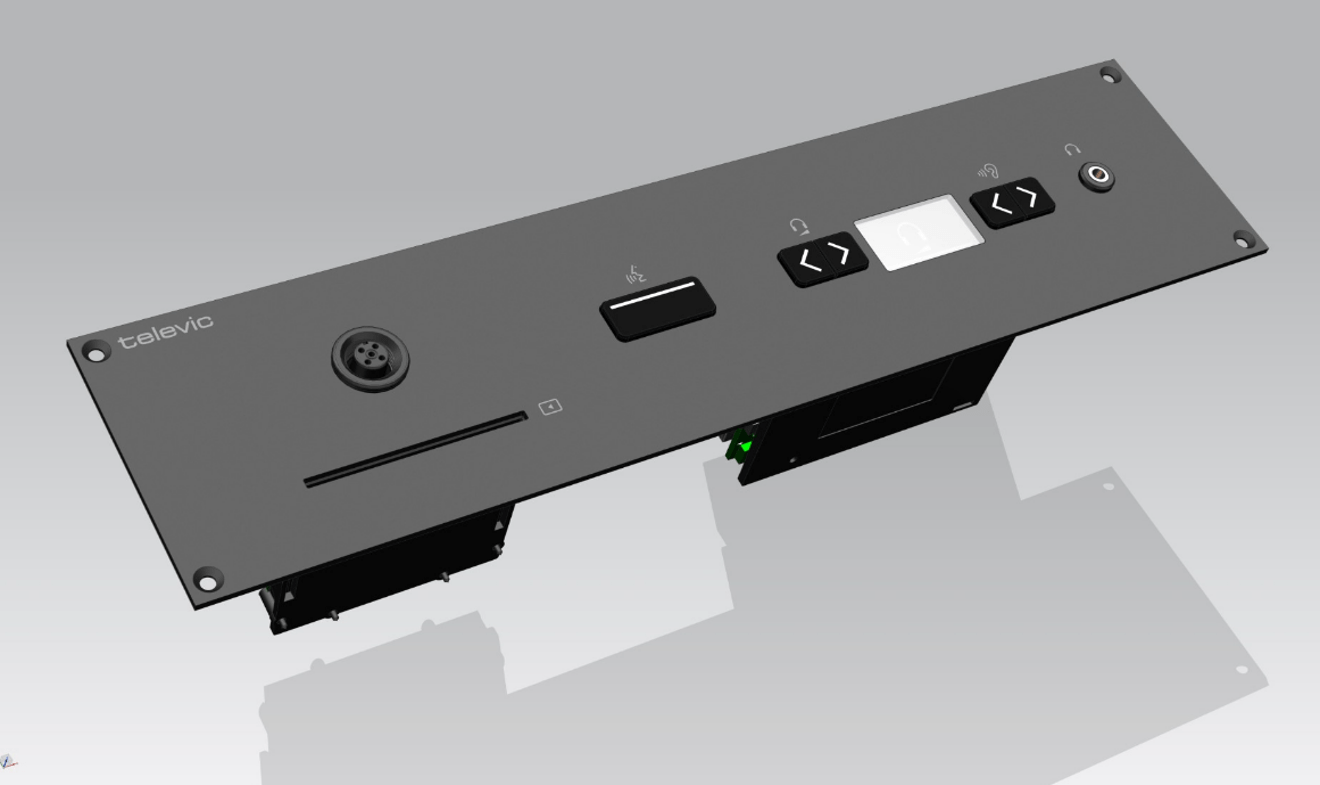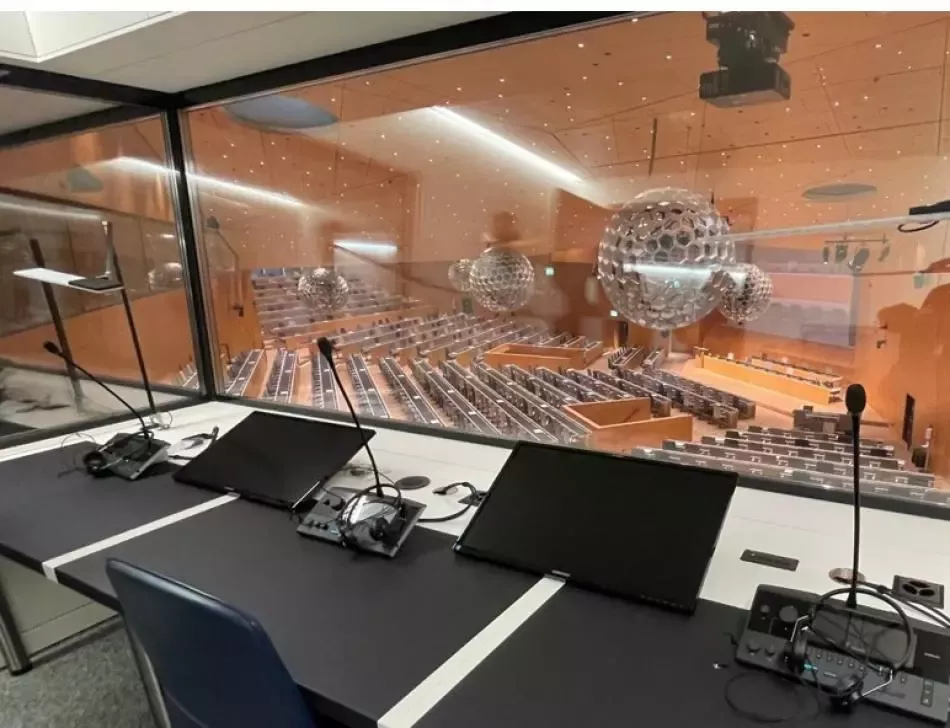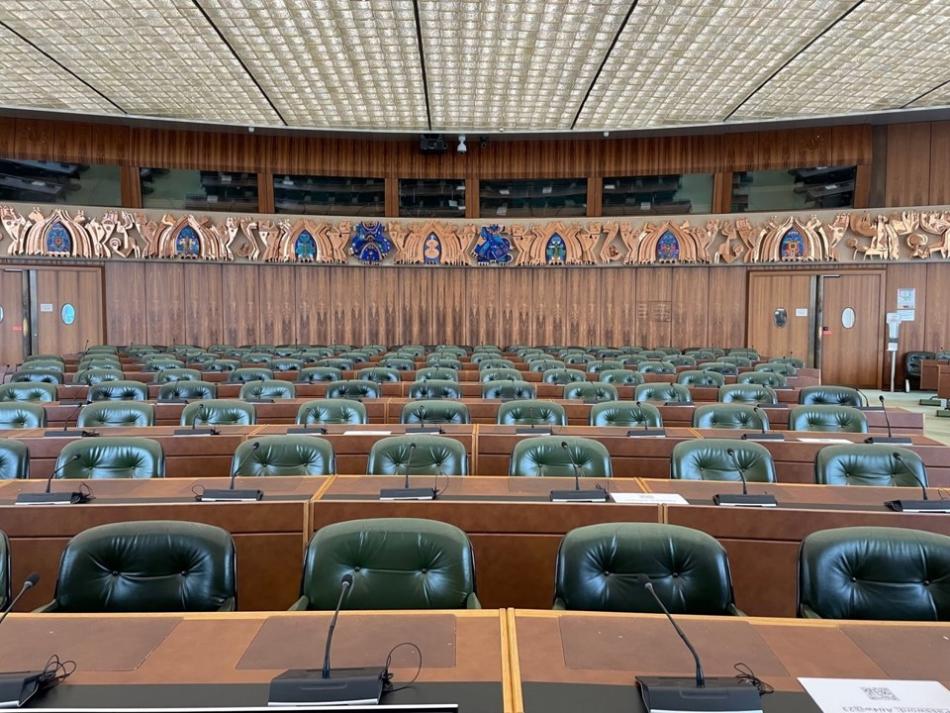
The World Intellectual Property Organization: Revolutionizing Diplomacy with Cutting-Edge Technology
Nestled at the heart of the United Nations' operations in Geneva, Switzerland, the World Intellectual Property Organization (WIPO) stands as a beacon of innovation and diplomacy.
As a UN agency, WIPO offers a global forum for intellectual property policy, services, information, and cooperation on a global scale between UN member states.
With a rich history dating back to 1967, WIPO has experienced remarkable growth, evolving into a complex with multiple iconic buildings, including the Arpad Bogsch building and its striking 13-storey glass tower. This impressive venue hosts delegations from the world's most influential nations, facilitating up to 150 days of conferences across its various buildings.
Diplomats and delegates from UN member states gather here to discuss intellectual property policy, both in large, open forum conferences and in behind-the-scenes negotiations in more intimate meeting spaces.
The Project
WIPO's commitment to being at the forefront of international diplomacy is reflected in its investments in cutting-edge technology. This commitment led to a recent project aimed at enhancing the organization's operations.
The project, which underwent a public tender process, involved the development of a state-of-the-art audio and video conferencing system. Technical specifications were meticulously designed by the client, with the valuable input of a consultant.
The execution of this visionary project was entrusted to AV integrator Projection Nouvelle.
WIPO had a double objective in this project: one was to enable the interconnection of various rooms, creating a network secured by VLANs. This innovation allowed for active coupling of rooms, making it possible to accommodate more delegates in different rooms and the second, to enable coupling for interpretation services.
The project required upgrading systems in WIPO's large conference halls and smaller meeting spaces while also integrating existing technologies into a new framework and control system. A pivotal requirement was the ability to offer 'couplings' of different rooms, allowing audio and video signals to be linked together, as well as connecting interpretation systems to provide enhanced flexibility.
Interpretation has always been at the core of WIPO's operations in Geneva, and the technological overhaul demanded an interpretation system that met WIPO's specific requirements while seamlessly integrating into the broader control network, allowing interpretation between multiple rooms participating in a unified discussion.
WIPO Meeting Rooms
WIPO's remarkable complex features two captivating conference halls: Conference Room A, a listed building dating back to the 1970s, and a sleek, modern conference room used for international conferences and other events.
Both spaces are equipped with Televic Plixus conferencing units and a Lingua TX language distribution system. This standardized setup ensures a consistent and user-friendly experience for delegates, regardless of the meeting space they occupy. Discussions are interpreted into and from six languages: French, English, Spanish, Chinese, Arabic, and Russian.

Equipment & Technical Features
A central control room and eight interpretation booths, each meeting UN language standards, support the conference hall. The interpretation booths feature three positions for interpreters, equipped with Televic interpretation consoles and Samsung monitors for lighting control.
The control room serves as the nerve center, housing a Tricaster TC2 Elite mixer for a TV/broadcast approach when required.
An AMX control panel manages all equipment, both new and pre-existing. This setup enables operators to open and close microphones based on the seating plan in the conference hall.
De Magistris highlighted their capabilities:
The control room also features an Extron MediaPort 200 HDMI to USB bridge, which supports WIPO's Zoom functionality.
This advanced setup allows for a seamless transition between in-person and virtual meetings.
Outside of the public meeting spaces, WIPO provides numerous smaller meeting rooms, each equipped with Televic conferencing units.
These rooms can be easily coupled together, offering a flexible and standardized experience. The AMX touch panel simplifies the process, allowing operators to select the appropriate mode based on the user's requirements, whether it's merging rooms together or enabling passive coupling.
Despite the complexities of hosting up to 150 conferences annually, WIPO's commitment to innovation paid off.
By implementing advanced technology and seamlessly integrating it into their daily operations, they have revolutionized the way diplomacy is conducted on the world stage.
Projection Nouvelle's remarkable work in bringing these cutting-edge systems to life underscores the importance of collaboration between visionary organizations and skilled technology integrators.
installation work
WIPO's transformation didn't come without its challenges. The installation work had to be carried out during quieter periods to avoid disruptions to essential meeting rooms and conference spaces. Additionally, supply chain delays posed a significant hurdle. To keep operations running smoothly, Projection Nouvelle devised a stop-gap solution that allowed the system to function as intended while work was in progress.
The project kicked off in January 2022, and it took two years to complete, with Projection Nouvelle continuing to support and maintain the system under a dedicated contract. This ongoing support ensures that WIPO's operations run seamlessly and that their investment in advanced technology continues to yield benefits.
Today, WIPO boasts a secure and standardized system that offers scalability and a user-friendly experience. This state-of-the-art technology not only streamlines high-priority meetings and conferences for delegates but also makes these proceedings more accessible to remote observers.
Alexandre Rouvelet summed up the accomplishment, saying:
In conclusion
WIPO's journey to revolutionize the world of diplomacy with cutting-edge technology serves as a testament to the power of innovation and collaboration in creating a more connected and accessible global community.
With its commitment to staying at the forefront of international diplomacy, WIPO's investment in advanced technology will continue to shape the way nations interact and cooperate on the world stage.









